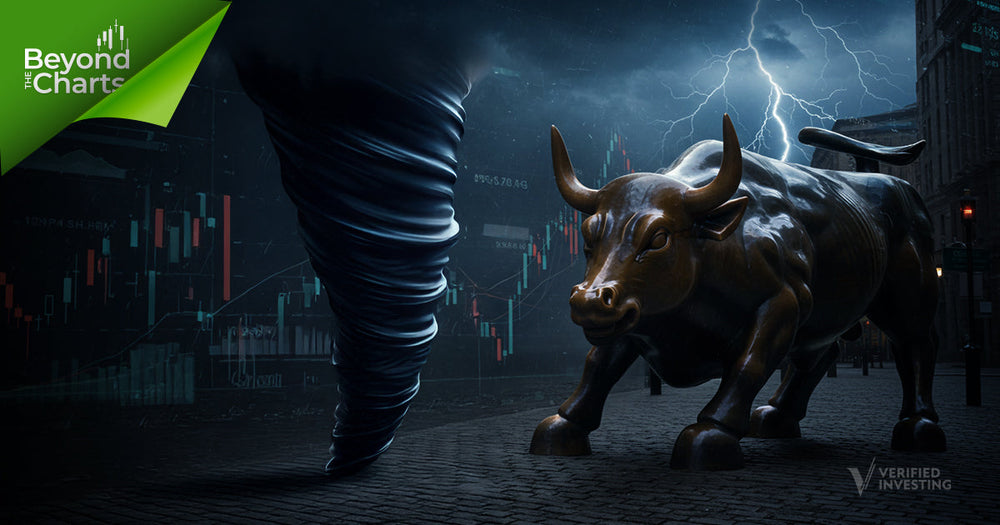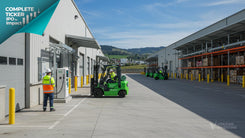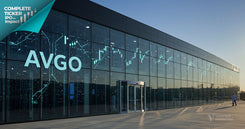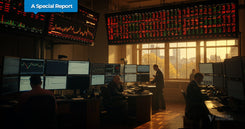Beyond the Charts: Natural Disasters and Their Impact on the Stock Market

Natural disasters have a profound impact on societies, economies, and financial markets. From hurricanes and earthquakes to wildfires, these events can disrupt industries, influence investor sentiment, and lead to significant market volatility. In this article, we'll explore some of the most significant natural disasters over the past century, arrange them chronologically, and draw correlations between their impacts to understand their cumulative influence on the world economy.
The Great Kanto Earthquake (1923)
On September 1, 1923, Japan was struck by the Great Kanto Earthquake, devastating Tokyo and Yokohama. The disaster resulted in over 140,000 deaths and caused widespread destruction. Financial markets were severely impacted, with the Tokyo Stock Exchange closing for an extended period. Reconstruction efforts led to increased government spending, influencing economic policies and market dynamics in the years that followed.
The earthquake disrupted Japan's budding industrial economy, causing shifts in trade patterns and exposing vulnerabilities in global supply chains. These lessons would echo through future disasters, emphasizing the interconnected nature of global markets. Investors began to understand how infrastructure recovery and international aid could reshape a nation's economic trajectory.
The Dust Bowl (1930s)
While primarily remembered as an environmental catastrophe, the Dust Bowl of the 1930s had profound economic impacts. Severe drought and poor farming practices rendered millions of acres in the U.S. Midwest unproductive, collapsing the agricultural sector. Farm incomes plummeted, causing widespread foreclosures and migration.
Financial markets reflected this turmoil, with agricultural stocks and related sectors suffering steep declines. The disaster spurred the creation of federal programs like the Soil Conservation Service, which laid the groundwork for modern ESG practices in agriculture. It also demonstrated how government intervention, through programs like the New Deal, could stabilize affected industries and protect investors from total loss.
Cyclone Tracy (1974)
Cyclone Tracy struck Darwin, Australia, on December 24, 1974, leveling much of the city. The storm caused $5 billion in damages (adjusted for inflation) and displaced tens of thousands of residents. While the Australian stock market remained relatively stable, regional economic disruption was significant.
This disaster underscored the importance of disaster-resilient urban planning. The rebuilding of Darwin became a model for integrating modern infrastructure with disaster mitigation strategies, influencing government policies globally. Investors began identifying infrastructure companies and urban development firms as potential beneficiaries in post-disaster scenarios.
The Indian Ocean Tsunami (2004)
The Indian Ocean tsunami of December 26, 2004, caused over 230,000 deaths across 14 countries and resulted in $10 billion in damages. Tourism-dependent economies like Thailand and Indonesia faced significant revenue losses, leading to temporary declines in their respective stock markets.
International relief efforts injected billions into reconstruction, benefiting companies involved in infrastructure, such as cement manufacturers and engineering firms. This disaster highlighted emerging markets' vulnerability to natural disasters and underscored the importance of global solidarity in recovery efforts. Companies specializing in disaster recovery and reconstruction saw increased investor interest during this period.
Hurricane Katrina (2005)
Hurricane Katrina made landfall on August 29, 2005, causing catastrophic damage along the Gulf Coast, particularly in New Orleans. The hurricane resulted in over 1,800 deaths and approximately $150 billion in damages. In the immediate aftermath, the New York Stock Exchange moved by less than a single percentage point, indicating limited short-term impact on the broader market. However, specific sectors, such as insurance and energy, experienced increased volatility due to extensive damages and disruptions.
Energy companies reliant on Gulf Coast operations saw immediate production disruptions, causing oil prices to spike. Reconstruction efforts fueled growth in construction and engineering firms, showcasing how disaster recovery can stimulate certain sectors. Katrina also led to an increase in ESG-focused investments, as investors began seeking opportunities in renewable energy to mitigate climate risks.
The 2011 Tōhoku Earthquake and Tsunami
On March 11, 2011, Japan experienced a magnitude 9.0 earthquake followed by a devastating tsunami. The disaster led to over 15,000 deaths and triggered the Fukushima Daiichi nuclear disaster. The Japanese stock market reacted sharply, with the Nikkei 225 dropping over 10% in the days following the event. Global markets also felt the impact, with declines observed in major indices.
This disaster underscored the interconnectedness of global supply chains. Automakers like Toyota and Honda temporarily halted production due to supply shortages. Similarly, technology companies reliant on Japanese semiconductor components faced significant delays, further exposing the fragility of just-in-time manufacturing models. The event drove renewed interest in disaster-resilient infrastructure, with ESG funds prioritizing investments in renewable energy and clean technology.
Hurricane Sandy (2012)
Hurricane Sandy struck the U.S. East Coast in October 2012, causing $70 billion in damages. The storm disrupted trading on Wall Street, with the New York Stock Exchange closing for two days. It marked the first weather-related closure of the exchange in 27 years.
The aftermath highlighted vulnerabilities in urban infrastructure. Companies specializing in renewable energy, such as NextEra Energy, saw increased investor interest as policymakers prioritized climate-resilient systems. Meanwhile, traditional energy companies faced criticism for their lack of preparedness.
Sandy's aftermath also highlighted the need for disaster-proof urban planning, sparking debates about zoning laws, flood barriers, and emergency response funding. Investors began focusing on companies that could provide innovative solutions to these challenges, creating a new niche for growth-oriented stocks.
Texas Freeze (2021)
In February 2021, a severe winter storm swept through Texas, crippling the state's energy infrastructure. Millions were left without power, and damages exceeded $20 billion. Energy companies reliant on natural gas struggled to meet demand, while renewable energy firms faced criticism for their inability to maintain output during extreme weather.
This event reignited debates over energy grid modernization and climate resilience. Companies specializing in energy storage, grid management, and renewable technology saw increased interest as policymakers sought solutions to prevent similar failures.
California Wildfires (2018 - Present)
In recent years, California has faced a series of devastating wildfires, with the 2018 Camp Fire being one of the most destructive. The Camp Fire caused 85 fatalities and destroyed over 18,000 structures, leading to insured losses of about $10 billion. More recently, the 2025 Los Angeles wildfires have been projected to cause damages between $135 billion and $150 billion, potentially making them the costliest in U.S. history.
These events significantly impacted utility and insurance companies. Shares of Edison International, the parent company of Southern California Edison, experienced declines due to potential liabilities associated with wildfire damages. Similarly, insurers like Allstate and Travelers faced rising insured losses, affecting their stock performance. The wildfires also highlighted the increasing relevance of ESG investments in mitigating climate risks.
Broader Economic Impacts and Overlaps
1. Disruption of Global Supply Chains
The Great Kanto Earthquake, Tōhoku disaster, and Hurricane Katrina each exposed critical weaknesses in supply chains. Lessons learned from these events have driven industries to adopt diversified sourcing strategies, reducing reliance on single suppliers.
2. Evolution of ESG Investing
The Dust Bowl and California wildfires emphasize the role of sustainable practices in preventing and mitigating disasters. These events have accelerated investor interest in ESG stocks, particularly in renewable energy, climate resilience, and sustainable agriculture.
3. Financial Market Resilience
Repeated exposure to disasters has led markets to develop greater resilience. Enhanced regulatory frameworks and disaster preparedness strategies have helped mitigate the economic fallout from recent events compared to earlier catastrophes.
Investor Considerations
1. Diversification
To mitigate disaster-related risks, investors should diversify their portfolios across regions and sectors. Holding assets in ESG-focused companies can also help reduce exposure to industries with high climate-related risks.
2. Monitoring Trends
Sectors like renewable energy, sustainable construction, and technology often benefit from increased disaster preparedness efforts. Keeping an eye on these trends can provide long-term growth opportunities.
3. Leveraging Verified Investing Tools
Verified Investing offers tools like Advanced Trader Insights and the Apex Live Day Trading Room to help investors identify market opportunities and manage risks effectively.
Conclusion
Natural disasters have historically impacted financial markets, with effects varying based on the event's scale, affected sectors, and the broader economic context. By understanding these dynamics and the overlaps between disasters, investors can make informed decisions and develop strategies to navigate uncertainties.
Trading involves substantial risk. All content is for educational purposes only and should not be considered financial advice or recommendations to buy or sell any asset. Read full terms of service.




